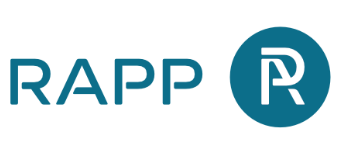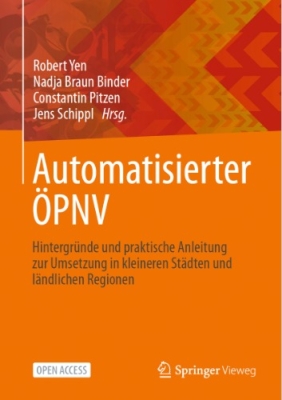The SVI research project "Transport of the Future 2060" aims to develop a visionary view of the long-term development of traffic and transport in Switzerland. Several parallel sub-projects are to provide the (coordinated) building blocks to form three common visions of the future: "Evolution", "Revolution" and "Devolution".
Initial situation
Fundamental upheavals will take place in the transport sector in the coming years and decades. This will be triggered not only by technological developments (digitalisation, automation and electrification), but also by "non-technological" ones such as climate change, new relationships between living and working and other trends in society as a whole. Many market participants expect a disruptive development in the mobility market.
Mission
The aim of the research project was to investigate future types of mobility services and the impact of trends on possible new business models as well as the organisation of the mobility market. The focus was on the future demarcation between public and private transport.
Procedure
Together with the ZHAW, we formulated five central developments in the research project with the help of theses that paint a plausible picture of the mobility market in 2060.
- Social attitudes and motives are the primary drivers of disruptive innovations. Technological possibilities alone are not enough.
- The benefit of the mobility purpose becomes decisive. Transport becomes a commodity that is integrated into the product or service. The price of the mobility service is no longer separated from the product.
- New ways of creating value are emerging: Business models with value creation outside the mobility market, advertising-oriented models and freemium models have arrived in the mobility market.
- Public transport must be redefined in order to prevent legal obligations from becoming a straitjacket with which current providers lose their ability to compete with private providers.
- No indications have been discovered in research that new forms of supply could have a limiting influence on the demand for mobility. Therefore, without setting the appropriate framework conditions, mobility will continue to increase.
Example Überland Mobil AG
ÜMAG operates a concessionary on-demand shuttle service in rural areas. Instead of stops, there are spatial and temporal availability classes that designate the waiting times until the automated shuttle arrives. Compliance with maximum waiting times is a prerequisite for compensation agreements with the state and a criterion for inclusion of the service in the MaaS Portal Switzerland.
Depending on the price class, a shared taxi, an individual vehicle or a vehicle with customer-specific equipment is available. These are equipped via advertising partners. Other special offers, such as "women only" shared taxis are also available for an additional charge.
The basic offers are financed by public compensation. Additional offers are paid for by the user himself or by third parties.
Example Portemobility
"You plan, we move". On the new trend platform, trips are no longer planned, but only time, place and transport purpose are specified. Shopping for food on the way home? All you have to do is enter the departure time and shopping time in the app. The shuttle arrives punctually at the door, takes care of route selection and chooses the shopping shop.
Portemobility is free of charge in the basic offer - a freemium model. For basic customers, advertisements are displayed during the journey and there are no further options (e.g. which retailer to shop at). For a fee, the place of purchase, vehicle comfort, onboard equipment and much more can be ordered on a case-by-case or permanent basis. Premium accounts
and business models are available.
Portemobility is thus financed by micro revenues from the user side, but more significantly by revenues from advertising partners and agency fees that Portemobility charges its partner companies.
Result
The following challenges for the regulation of the future mobility market emerged for us through the processing of the theses:
- New, cross-sectoral business models make the regulation of the mobility market more difficult. One approach to solving this problem can be found in the standardisation and creation of universally valid rules in the mobility market.
- MaaS providers are said to have a high degree of market power, whereby a certain trade-off between monopolisation and the necessary economies of scale for economic operation must be accepted. In order to prevent abuse, the regulator must make fundamental decisions as to whether it should rather intervene in a controlling manner and become active as a MaaS provider himself, or limit himself to setting framework conditions.
- The financing of public transport is at risk due to the increase in private mobility offers (in the form of a "commodity"), as a decline in demand must be expected. New mobility offers provide opportunities and risks for public transport. The regulatory definition of public transport and the concept of universal service are prerequisites for exploiting the opportunities.
An overall view of the findings from the research project shows that the theses presented will not work in isolation, but will lead to interdependencies that are likely to fundamentally shape the mobility market of the future. Further research is needed to find out how mobility as a commodity can be expressed concretely in business cases.
For the mobility of the future, it is important to seize opportunities:
- To design the legal basis of public transport in such a way that new forms of mobility can be used as an opportunity for public transport services.
- Finding new structures in the financing and payment of transport, both on the user side through new pricing models and on the infrastructure side.
- Examine use-dependent infrastructures that can deal with the increasing diversity of mobility offers and the most varied business models.
> PDF | Transport of the future 2060: New forms of service - organisation and diffusion
Contact us
Artur Luisoni
artur.luisoni@rapp.ch
+41 58 595 78 59
Robert Yen
robert.yen@rapp-trans.de
+49 173 20 02 609
Key data
Client: SVI Swiss Association of Traffic Engineers and Experts
Period: 2019 - 2020
Partner: ZHAW







